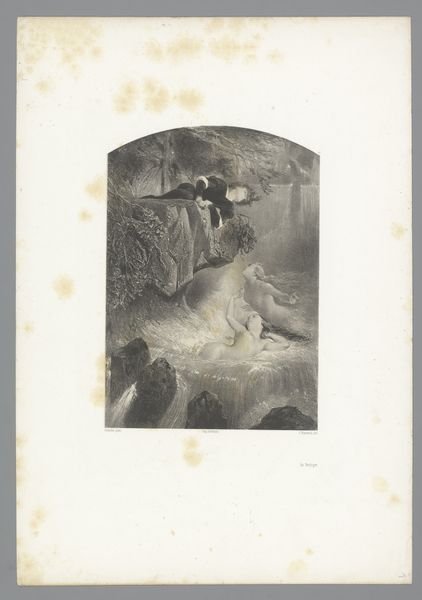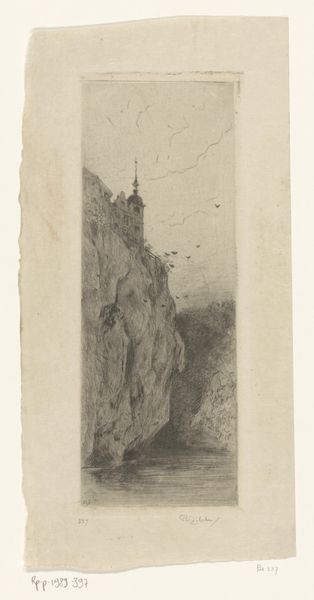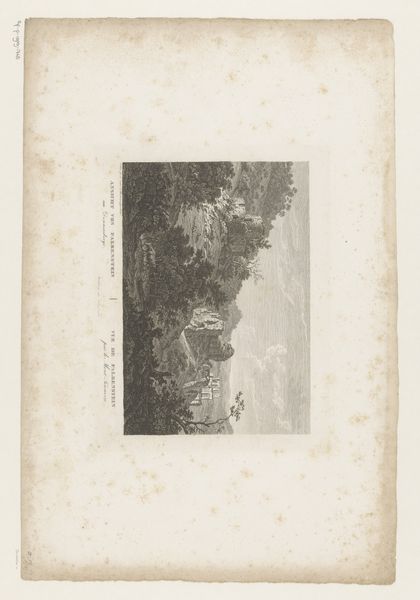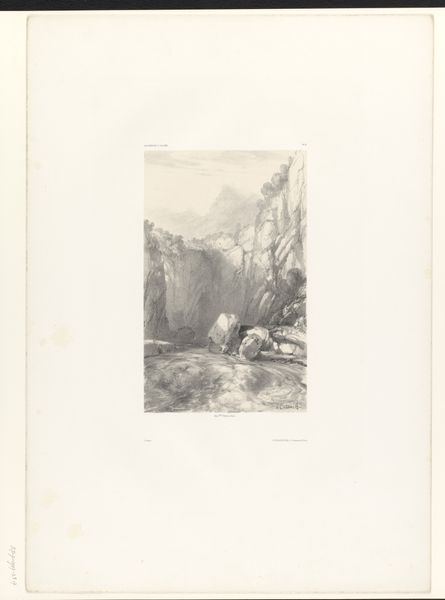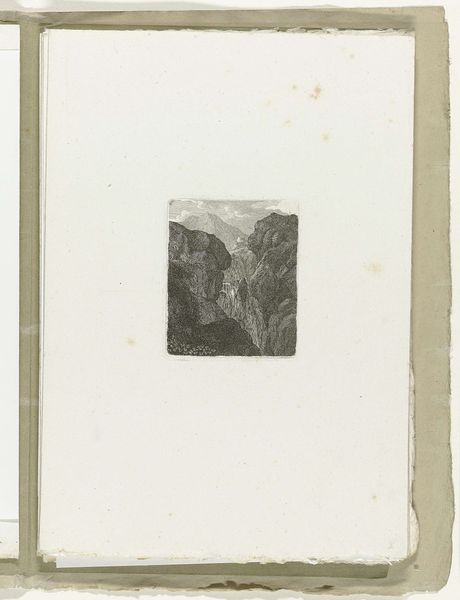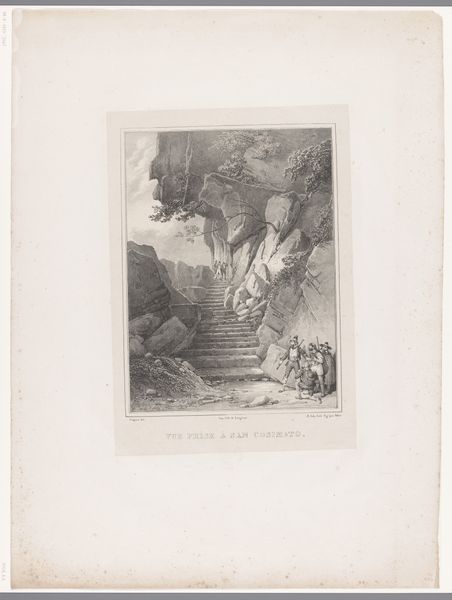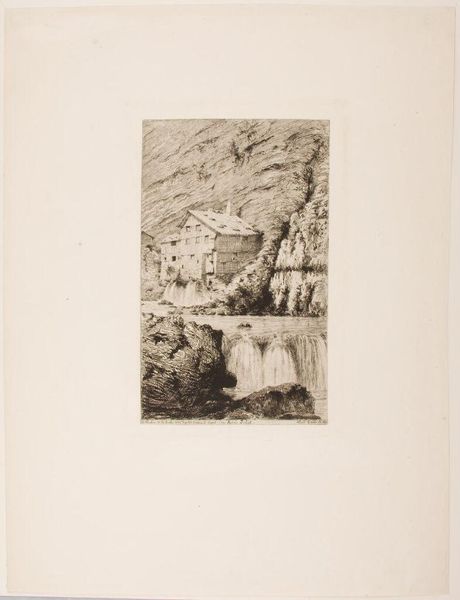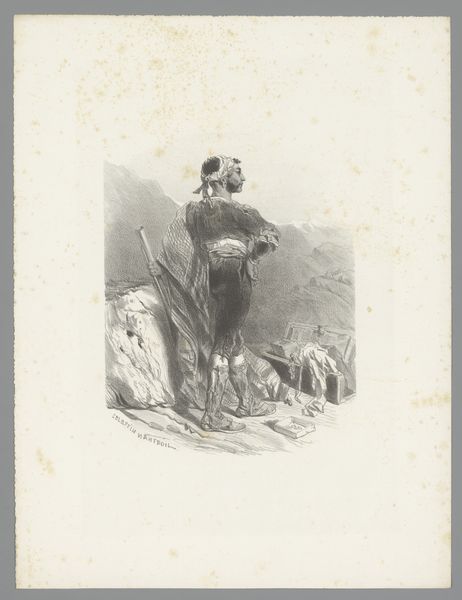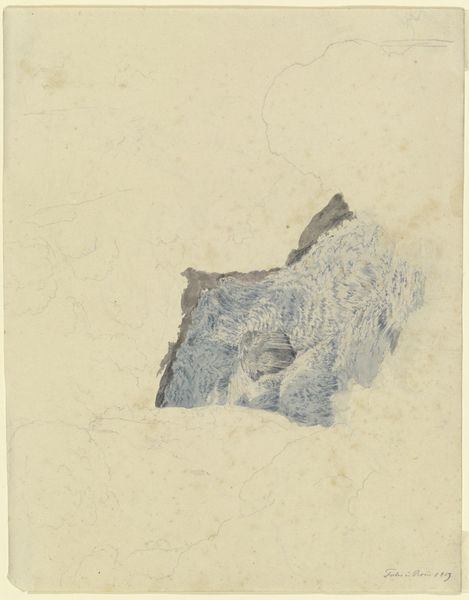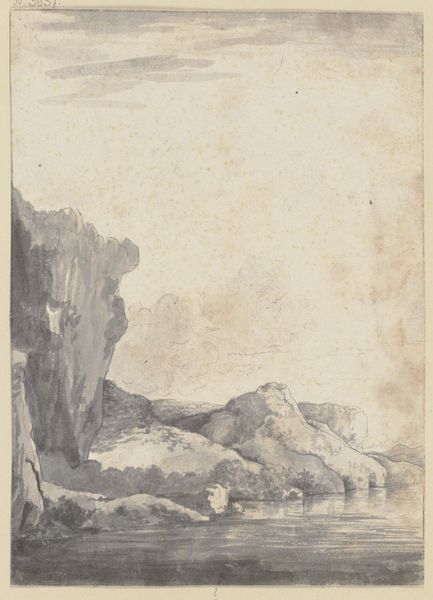
drawing, print, etching, engraving
#
drawing
# print
#
etching
#
landscape
#
waterfall
#
romanticism
#
engraving
Dimensions: height 555 mm, width 365 mm
Copyright: Rijks Museum: Open Domain
Jan Baptiste de Jonghe made this drawing of a waterfall between rocks using pen and gray ink, sometime in the early 19th century. This kind of landscape image gained traction with the rise of Romanticism, a cultural movement that valorized the beauty and sublimity of the natural world. It was a reaction against the rationalism of the Enlightenment and the environmental impact of early industrialization. The Romantic sensibility encouraged people to reconnect with nature and to find spiritual meaning in it. De Jonghe’s rendering of the waterfall, with its dramatic rocks, turbulent water, and lush vegetation, exemplifies the Romantic aesthetic. This image would have been seen as a commentary on the social structures of its time, offering an alternative to the urban life. To understand this artwork better, we can consult the artist's biography, the cultural history of Romanticism, and the environmental history of the 19th century. Art is always contingent on the social and institutional context in which it is made.
Comments
No comments
Be the first to comment and join the conversation on the ultimate creative platform.
